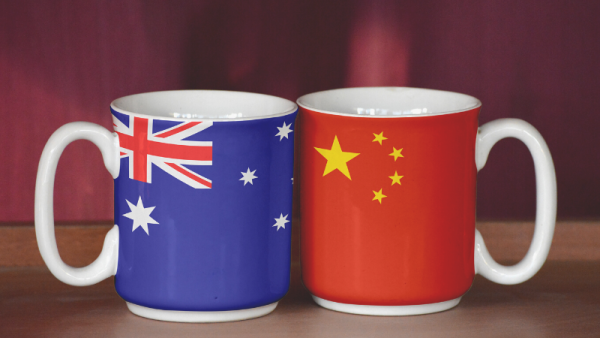Aritra Deb / Shutterstock

Tao Xie, Adjunct Professor, Australia-China Relations Institute, University of Technology Sydney |
Few residents of Wuhan, a city in central China, would ever imagine that their hometown would become an international household name overnight. But it did, and all because of a novel coronavirus, whose victims were first identified in the city in late December 2019. Named COVID-19 (coronavirus disease 2019) by the World Health Organization in early February, the virus has now become a global pandemic, forcing many governments to impose domestic and international travel bans and bringing the global economy to a grinding halt.
A virus is colour blind, to invoke former US Supreme Court Justice John Marshall Harlan. It does not discriminate on the basis of race, religion, or socioeconomic status. It has no ideological bias. It recognises no national boundary.
Thus in the face of a pandemic that has quickly gone global, one would expect the People’s Republic of China (PRC) and the US – the two biggest players in global governance – to work together against it. Yet unfortunately, for nearly two weeks the two governments chose instead to embroil themselves in a war of words over the most appropriate name for the deadly virus, and who ought to shoulder the blame over its outbreak. Then, just as most analysts were gearing up for escalating tensions, Beijing and Washington suddenly decided at the March 26 G20 virtual summit to stop finger-pointing – at least for the moment – and behave instead as responsible stakeholders in the global fight against COVID-19.
The year 2020 began somewhat promisingly for China-US relations, as the two governments on January 15 signed a preliminary agreement that eased the 18-month-long bilateral trade war. The outbreak of COVID-19 was initially hailed as an opportunity for them to enhance joint efforts to deal with non-conventional security threats. As late as March 1, the Chinese embassy in Washington declared on its website that it had spared no effort in promoting China-US cooperation to fight against the virus.
But against the backdrop of geopolitical rivalry, economic competition, and emerging ideological confrontation between the world’s two most powerful countries, one should hardly be surprised that COVID-19 has become a bone of political contention and a source of outlandish conspiracy theories.
In fact, COVID-19 is merely a new genie in the old bottle of China-US mutual distrust. The genie is not the cause of mutual distrust, but its politicisation is certainly an effect of that distrust. There will undoubtedly be more new genies, and the old bottle may soon explode, unless both Beijing and Washington immediately rethink their assumptions and beliefs about the other and about themselves, and readjust their respective policies accordingly.
More specifically, there are not-so-small number of elites and members of the public in both countries who view the other through the lens of paranoia. And through social media, think tank reports, podcasts, and policy papers, these views can spread as quickly as COVID-19. On the American side, China is portrayed as actively undermining the US-led liberal international order, challenging America’s global leadership, and launching a massive disinformation campaign – dubbed China’s ‘sharp power’ strategy – to sway American public opinion. On the Chinese side, the US is depicted as bent on preventing China from realising its great rejuvenation and obsessed with destabilising China’s political order. As a result, anything that goes wrong at home or abroad in one country is often reflexively attributed to the sinister and deliberate plan of the other.
Pundits have offered many suggestions on increasing trust between Beijing and Washington, including economic interdependence, people-to-people exchanges, and frequent high-level dialogues. But so far the effects of these measures seem marginal. Even when both are threatened by a serious non-conventional global threat like COVID-19, they apparently have failed to work together, up until now.
It is politically convenient to single out the Trump presidency as the biggest factor behind the current state of China-U.S. relations. To be sure, Trump has accelerated the destabilisation of the bilateral relationship with, for example, the trade war), but there were already signs of increasing distrust during Obama’s second term, such as the strong US opposition to the Asian Infrastructure Investment Bank. So a post-Trump era in 2021 or 2025 will not necessarily indicate a reversion to the ‘old normal’. There is something structural going on, but structural forces are almost always beyond the control of one country.
So what can help reduce mutual distrust between Beijing and Washington? As an old Chinese saying goes, the solution to a crisis usually lies in the crisis itself. Perhaps COVID-19 can be a unique opportunity for China and the US to mend their relations. After all, Americans desperately need face masks and other personal protective equipment, of which China is currently the world’s major producer. And while there were reportedly some missteps in the beginning, China’s experiences in effectively controlling the spread of the virus within its border can be invaluable to America’s struggle right now. And, equally, it is in China’s best interests if the US economy quickly recovers, as it critically depends on America’s market, technology and services. But this asymmetrical dependence may be perceived as a serious national security threat – some US politicians have already voiced such concerns, and it is entirely possible that the post-COVID-19 era will witness a faster decoupling of the world’s two largest economies.
But let us hold out hope that the deadly virus will become a uniter – rather a divider – in bilateral relations, bringing about a decrease – even if small and temporary – in mutual distrust. The biggest lesson to be learned by leaders in both countries is perhaps that political distrust is a far more dangerous virus than COVID-19 or its variants, and with this lesson in mind, we will be close to seeing a new page turned in China-US relations.
Author
Professor Tao Xie is an Adjunct Professor at the Australia-China Relations Institute, University of Technology Sydney.
Professor Tao Xie is the Dean of the School of International Relations and Diplomacy, Beijing Foreign Studies University. He holds a PhD in political science from Northwestern University. Professor Xie’s research interests include American politics, China-US relations, and Chinese foreign policy. He has published extensively in both English and Chinese, including most recently 'In the Shadow of Strategic Rivalry: China, America, and the Asian Infrastructure Investment Bank', published in the Journal of Contemporary China.


